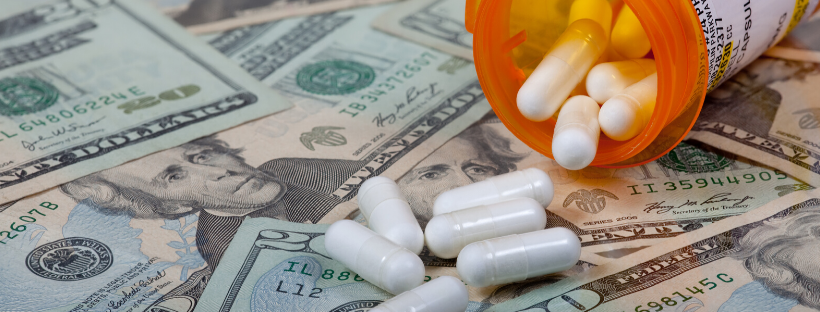The FDA has done something that prescription drug importation advocates had possibly given up on. Not me. The agency drafted a new proposed rule to allow importation from Canada of lower-cost drugs and industry guidance for drug manufacturers to import their FDA-approved foreign drug versions, for which they can charge lower prices. The proposed rule provides specifics so that states contemplating or already formulating wholesale drug importation programs have a shot at gaining approval for those programs, per Section 804 of the Food, Drug and Cosmetic Act.
Year after year after year, the media has reported Pharma’s talking point: No Secretary of Health and Human Services, Republican or Democrat, has been able to certify the safety of importation from Canada. That’s never been true, at least not exactly. It’s not that they haven’t been able. It’s that they haven’t been willing. Also, it’s not just certifying the safety, it’s certifying that there will be “no additional” safety risk – a high standard. Well, apparently it can be done. The FDA stated:
“The rule, when finalized, would contain all requirements necessary for a State or other non-federal governmental entity and its co-sponsors, if any, to demonstrate that their importation program will pose no additional risk to the public’s health and safety.”
Amen.
There are serious obstacles to operationalizing new imports from Canada, however. Most importantly, Canada and the manufacturers may not cooperate. Canada says it’s too small to satisfy the drug needs of bigger states like Florida, not to mention the whole United States. Drug manufactures may simply not provide Canada with more of its products, knowing they could get more at U.S. prices.
Here’s Politico for that discussion and everything pertaining to “why it won’t work.”
But this momentum leads me to believe that this is the beginning of the end of policy paralysis on importation. Savings through limited state programs on some expensive brand name drugs imported from Canada are entirely possible. Of course, it’s by no means a panacea, but it’s a chink in the armor of Big Pharma on importation and drug prices. And the rule-making process will illuminate the reality of why there’s no reason to limit this to just Canada!
As far as the industry guidance, referred to initially as Pathway II, essentially it would allow drug companies to import their own FDA-approved drugs that are approved for other markets and sell them at lower prices. That probably sounds confusing. Why would they do that? Undercut their own prices. And can’t they already import FDA-approved drugs?
The best way to explain this is to note that every FDA-approved drug has an NDC number: national drug code. When a drug company makes a drug for the U.S. market, with FDA-approved labels, the label has an NDC number on it. They set a list price for that unique NDC. Then pharmacy benefit managers (PBMs) negotiate a lower price with the drug company. Let’s say the list price is $100 on drug X, negotiated down to $80. But there are other buyers, big pharmacy retailers for the cash-paying market, who are buying at $100. The new FDA guidance would allow the drug company to create a new NDC number for the same drug that was marketed for a foreign market. The drug company would be free from its PBM contracts to charge a lower list price in the cash market, let’s say $85 instead of $100. Apparently, drug companies have told Secretary Alex Azar that they may actually do that. I know it’s still confusing. The takeaway, however, is that drug companies, who blame PBMs for forcing up the list price, will have less of an excuse to do so, since they have a way around those contracts
Finally, and I’ll return to this next month in detail, it was interesting that the FDA recognized the need for personal drug importation. Due to lower prices in other countries, the FDA states:
“…some American consumers have sought to import drugs from other countries in an effort to obtain treatments that may be otherwise inaccessible to them because of cost. According to a national poll, millions of Americans have purchased prescription drugs from other countries (Refs. 17 and 18).”
The FDA explicitly states in the rule that they are not “implementing” personal importation provisions of Section 804J. But the FDA’s picking and choosing which parts of Section 804 to now implement, do not undermine the force of what the law states about personal importation. I’ve stated it many times and will state it again. Congress declares:
“that in the enforcement against individuals of the prohibition of importation of prescription drugs and devices, the Secretary should—
(A) focus enforcement on cases in which the importation by an individual poses a significant threat to public health; and
(B) exercise discretion to permit individuals to make such importations in circumstances in which—
(i) the importation is clearly for personal use; and
(ii) the prescription drug or device imported does not appear to present an unreasonable risk to the individual.”
I presented our position in a PharmacyChecker media release, simply to applaud this move forward on importation and remind the public that personal importation, per part J above, already helps millions of Americans afford medication.
Tagged with: Drug and Cosmetic Act



Perhaps most efficient and cost effective to allow the actual PATIENTS to submit Rx’s to the Canadian (and other) pharmacy storehouses, thereby eliminating many profit seeking middle men as the medications make their way back to the US after having already been sold to the Canadian supply companies in the first place!